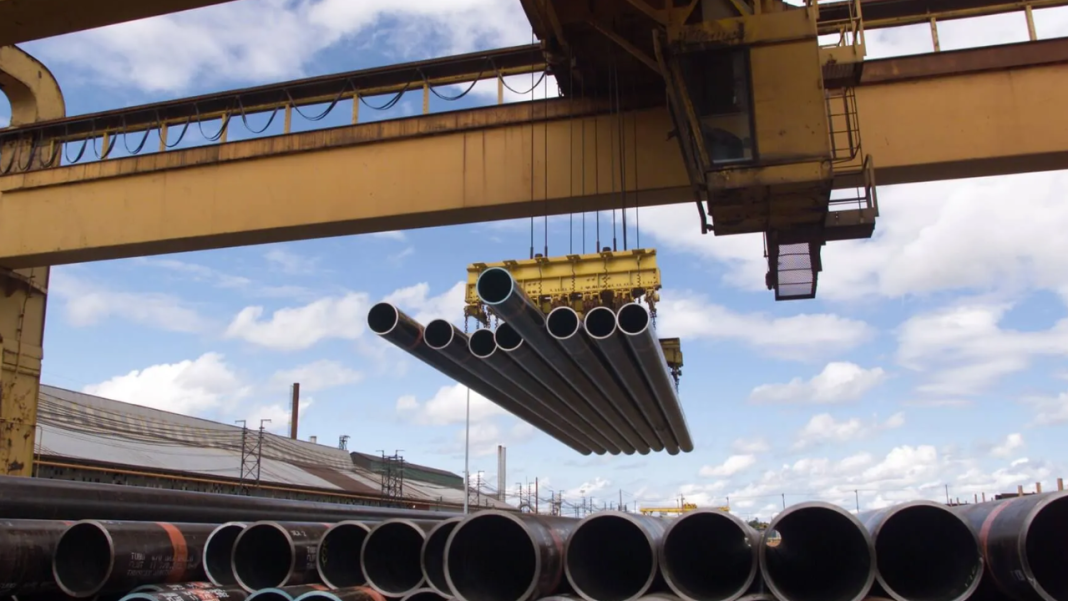Carbon steel pipes are fundamental parts of various industries given their durability and adaptability. Made commonly out of iron and carbon, these lines flaunt hearty mechanical properties, making them ideal for moving liquids and gases under high-pressure circumstances. Their ability to resist corrosion and temperature versions enhances their reliability in crucial applications such as oil and gasoline transportation, business machinery, and production.
Carbon steel pipes are available in diverse sizes and thicknesses to accommodate numerous operational requirements, providing value-effective answers without compromising on performance or structural integrity. With ongoing improvements, carbon steel pipe hold to play a pivotal position in modern infrastructure and commercial sectors worldwide.
Manufacturing Process of Carbon Steel Pipes
The manufacturing of carbon steel pipes involves several procedures to ensure the very final product meets the desired specs. Here’s a detailed overview of the steps
Raw Material Choice
Raw material choice is a vital first step in the production of carbon steel pipes. Producers cautiously choose incredible billets or slabs based totally on their chemical composition, mechanical properties, and suitability for the favored pipe specifications. This initial decision drastically impacts the energy, durability, and corrosion resistance of the very last product, ensuring it meets the rigorous requirements demanded via diverse industry applications.
Heating and Forming
Heating includes elevating billets or slabs to high temperatures in furnaces to boost malleability. In seamless pipe production, heated billets are pierced and rolled to shape hollow tubes of desired dimensions. For welded pipes, steel strips or plates are formed into cylindrical forms and welded alongside the rims with the use of methods like electric-powered Resistance Welding (ERW) or Submerged Arc Welding (saw).
Heat Treatment
Heat Treatment complements pipe residence submit-forming. Annealing reduces internal stresses and increases sturdiness via controlled heating and slow cooling. Normalizing improves uniformity and mechanical residences by way of heating above essential temperature and air-cooling. Quenching and tempering combine speedy cooling and reheating to attain unique hardness and electricity profiles, important for the assembly of various industry demands.
Sizing and Finishing
Sizing refines pipes to genuine specs puts up-heat treatment. Bloodless sizing involves drawing procedures to obtain precise dimensions and smooth surfaces. Warm sizing adjusts larger dimensions using heat-finishing techniques to enhance mechanical homes. The finishing process ensures uniformity and satisfaction and is crucial for meeting stringent enterprise standards earlier than pipes are inspected, coated, and organized for shipping.
Inspection and Testing
Inspection and checking out validate pipe fine before shipment. Non-adverse testing techniques like ultrasonic and radiographic assessments come across internal flaws without damaging pipes. Negative assessments check mechanical homes via anxiety, hardness, and impact exams. Visual inspections make certain pipes meet dimensional and surface necessities. Stringent high-quality manipulation measures, consisting of adherence to specs and requirements, ensure best pipes meet rigorous criteria and continue to the very last processing and packaging for delivery to customers.
Surface Treatment and Coating
Surface treatment and coating enhance pipe durability and corrosion resistance. Pickling removes floor oxides, preparing pipes for the next treatments. Galvanizing applies a defensive zinc layer through immersion in molten zinc, perfect for harsh environments. Coatings like epoxy or polyethylene similarly defend pipes from corrosion and abrasion. Those remedies expand service lifestyles and hold overall performance in diverse applications, ensuring pipes meet longevity expectations in demanding commercial settings before the very last packaging and delivery.
Final Processing and Packaging
Final processing guarantees pipes meet customer specifications earlier than packaging. Slicing machines trim pipes to particular lengths, even as give up completing operations like beveling or threading prepare them for installation. Pipes go through meticulous inspection to verify dimensions and surface quality, ensuring compliance with industry requirements. Properly classified and bundled, pipes are then packaged to shield opposition harm all through transportation, facilitating safe shipping to customers for seamless integration into their projects and applications.
Summary
The manufacturing of carbon steel pipes involves a meticulous system from raw material selection to the very last packaging. Through heating, forming, warmth treatment, and stringent first-rate control measures, producers make sure pipes meet excessive standards of durability, dimensional accuracy, and corrosion resistance. This precision guarantees that carbon steel pipes reliably serve numerous industrial needs with sturdiness and overall performance.











